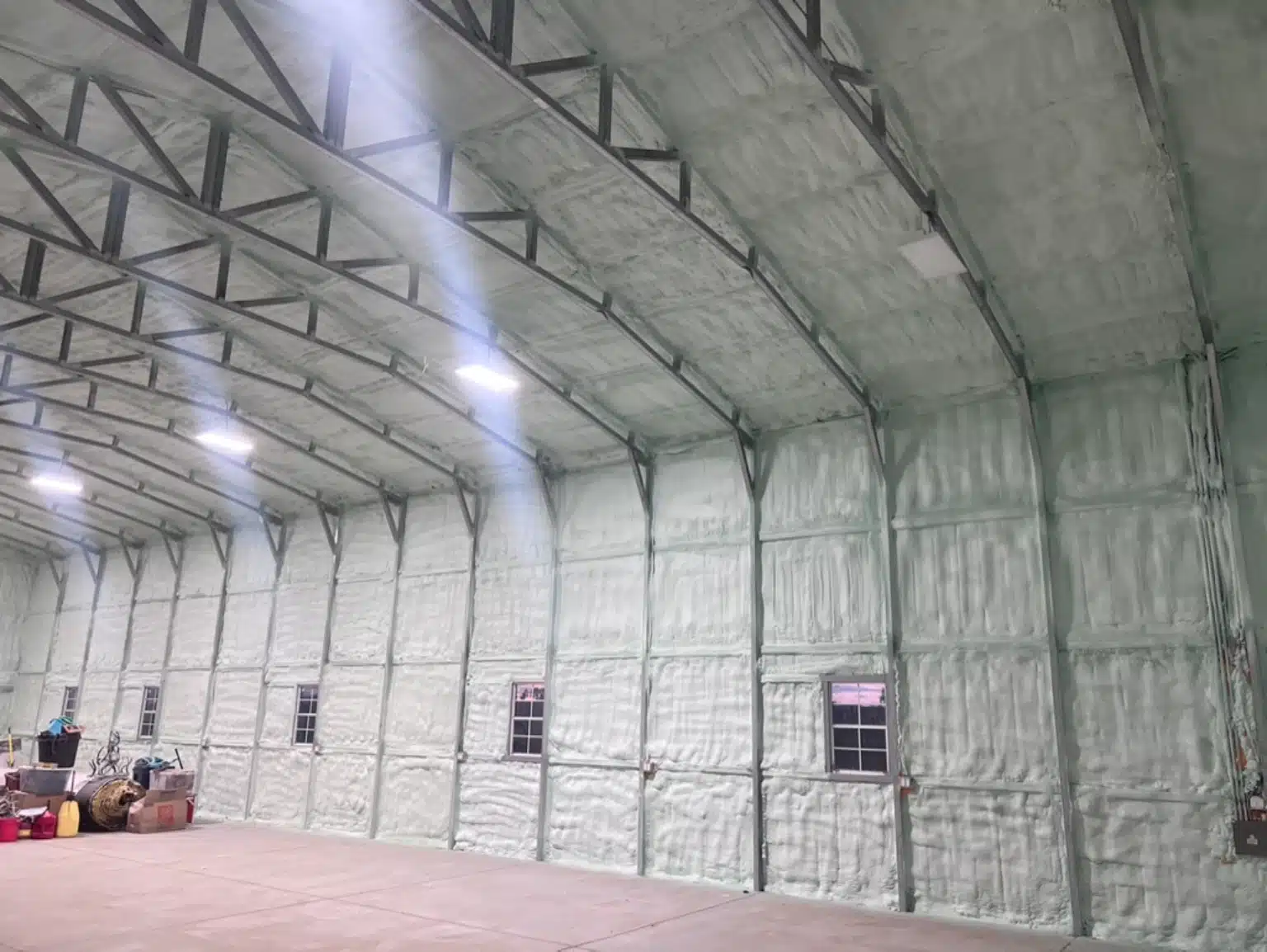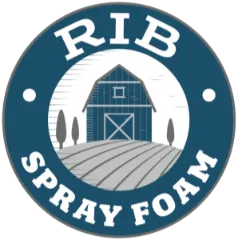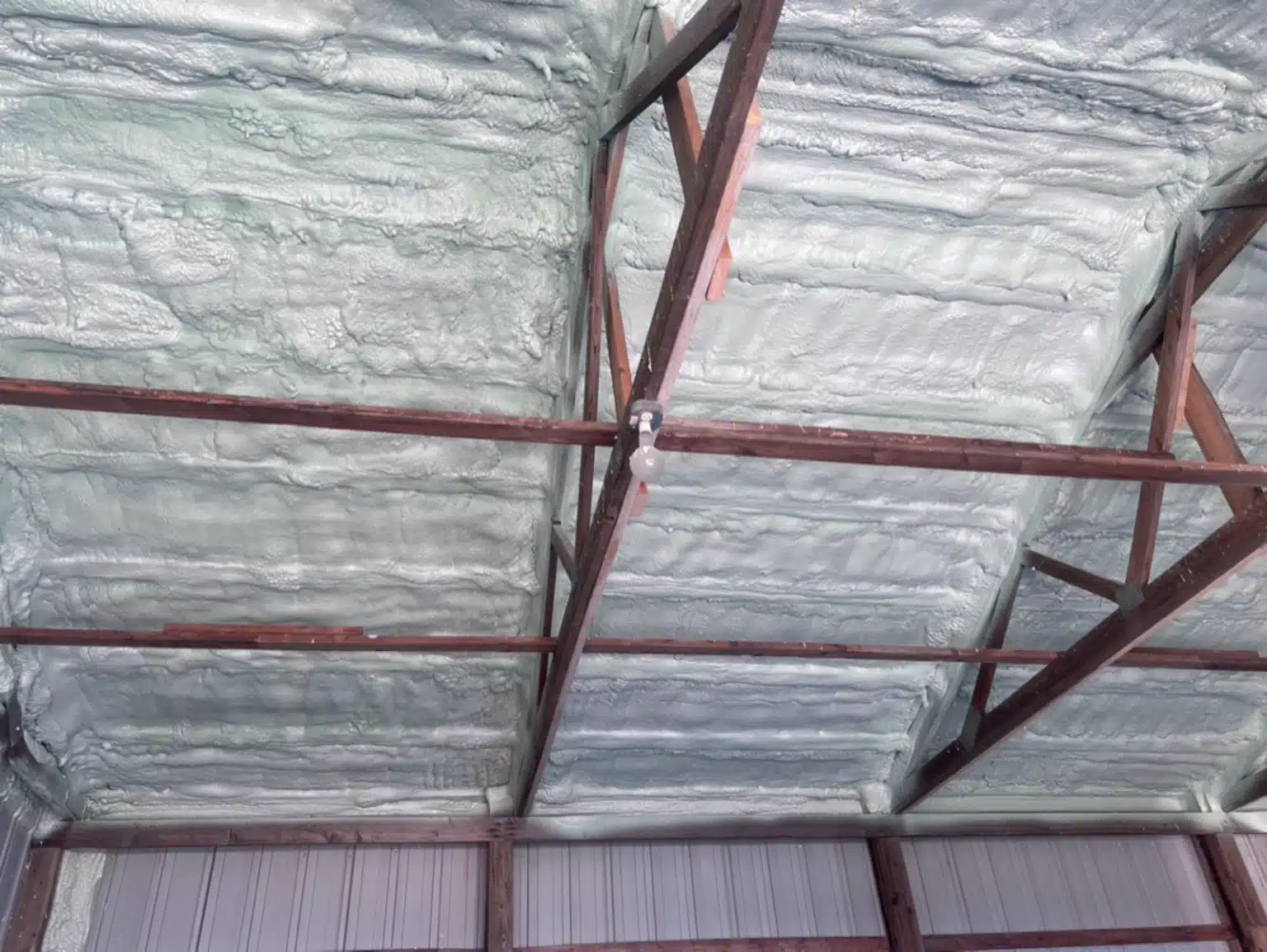Spray foam insulation is a practical solution for many properties in Commerce City, especially in areas with wide temperature swings and persistent drafts. Closed cell spray foam is often the better option for improving thermal resistance and reducing moisture infiltration in both residential and agricultural buildings. For properties dealing with crawl space moisture, drafty pole barns, or inconsistent indoor temperatures, spray foam provides measurable benefits in air sealing, energy efficiency, and structural support.
This article breaks down the technical considerations, material differences, application scenarios, and climate suitability. Rib Spray Foam Company shares practical insights from firsthand installation experience in Commerce City homes, pole barns, and new builds. The goal is to clarify whether spray foam meets the demands of your property type and local conditions.
Key Differences Between Insulation Types
| Feature | Closed Cell Spray Foam | Fiberglass Batt | Blown-In Cellulose |
|---|---|---|---|
| R-Value per inch | ~6.5 | ~3.2 | ~3.7 |
| Air Seal | Full | Limited | Moderate |
| Water Resistance | High | Low | Low |
| Moisture Barrier | Yes | No | No |
| Structural Rigidity | Adds structural strength | No | No |
| Thickness Required (per R-19) | ~3 inches | ~6 inches | ~5 inches |
Bonus Tip: Closed cell foam is ideal for metal structures or buildings exposed to wind-driven rain or snow, common in Commerce City winters.
How Spray Foam Performs in Commerce City Conditions
Commerce City experiences low humidity in winter, dry heat in summer, and strong temperature deltas between day and night. This creates two major problems: energy loss through gaps and moisture buildup under floors or in attics.
- Crawl Spaces: Open vents and unsealed subfloors allow moisture migration from soil. Closed cell spray foam blocks this exchange.
- Pole Barns: Spray foam seals gaps between framing and sheet metal, reducing wind intrusion and heat loss.
- New Homes: Foam fills irregular framing cavities better than batt insulation, improving airtightness.
Technical Properties of Closed Cell Spray Foam
| Property | Measurement/Standard |
|---|---|
| R-Value per inch | 6.5 (ASTM C518) |
| Water Vapor Permeability | <1.0 perm at 2″ (ASTM E96) |
| Compressive Strength | 25 psi (ASTM D1621) |
| Air Impermeability | <0.02 L/s·m² @75 Pa (ASTM E2178) |
| Flame Spread Index | <25 (ASTM E84) |
Bonus Tip: A thickness of 2-3 inches of closed cell spray foam meets most IECC code requirements for exterior walls in Climate Zone 5B, which includes Commerce City.
Market Insight from Colorado and Beyond
- According to the U.S. Department of Energy, air leaks account for up to 30% of total energy use in older buildings (Energy.gov, 2023).
- The Colorado Energy Office reports that closed cell spray foam can reduce heating and cooling costs by 15%-25% compared to batt insulation in Climate Zone 5B homes.
- NAHB studies show that properly installed foam insulation can extend HVAC system life by reducing system cycling (NAHB Research Center, 2023).
Before Making a Decision
Make sure to evaluate these factors before selecting spray foam insulation:
- Structure Type: Wood-framed homes, metal buildings, and barns have different thermal behaviors.
- Ventilation Strategy: Sealing too tight without a ventilation plan can cause indoor air quality problems.
- Existing Moisture: Check crawl spaces, basements, or attics for existing water intrusion before spraying.
- Long-Term Use: For permanent occupancy buildings, the higher upfront labor and application complexity of foam may be offset by reduced HVAC loads.
Bonus Tip: For remodels or retrofits, use infrared scanning before and after application to validate performance.

Rib Spray Foam Company Provides These Relevant Services
- Closed Cell Spray Foam: Dense, moisture-resistant insulation for attics, exterior walls, crawl spaces, and pole barns.
- Pole Barn Spray Foam: Thermal sealant for agricultural and steel buildings to reduce wind-driven heat loss.
- Crawl Space Spray Foam: Moisture and vapor control combined with insulation under floors and substructures.
- New Construction Spray Foam: Site-applied insulation for residential builds that improves energy code compliance.
Common Questions Before Choosing Spray Foam
Is it safe to use in crawl spaces with existing ductwork?
Yes, closed cell foam can encapsulate ducts to prevent condensation and energy loss. Ventilation must be planned correctly.
Can I apply spray foam over old insulation?
Remove old insulation first for a clean substrate. Debris can compromise foam adhesion.
Will it reduce outside noise?
Closed cell foam offers minor sound dampening. Open cell performs better for acoustic control.
Is it suitable for metal buildings?
Yes. Foam adheres well to metal and seals gaps that fiberglass cannot.
Evaluate Your Property Needs First
Spray foam can solve thermal bridging, moisture migration, and insulation gaps. But the choice must consider structure type, indoor air planning, and specific Commerce City weather patterns. Application should follow tested methods to achieve the expected thermal and air barrier performance.
Contact Rib Spray Foam Company for Expert Help
For property owners evaluating insulation performance, Rib Spray Foam Company can assist with crawl space sealing, barn retrofit projects, or new residential builds. For guidance or project assessment, email [email protected] or call (970) 518-2883. Get informed support without pressure-based sales.
FAQS
How long does spray foam last once installed?
Closed cell spray foam typically lasts over 30 years with no performance degradation if installed correctly.
Can it be painted or finished over?
Yes, it can be trimmed, coated, or drywalled over depending on application area and building codes.
What kind of maintenance does it need?
None. It doesn’t shift, sag, or require replacement unless physically damaged.
Does spray foam cause moisture buildup?
No, but improper ventilation after sealing a space can trap moisture. Always coordinate with ventilation systems.
Will pests chew through it?
Closed cell foam deters rodents and insects due to its density and lack of organic material.



